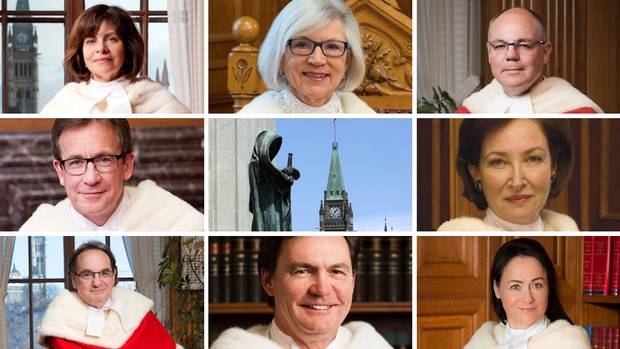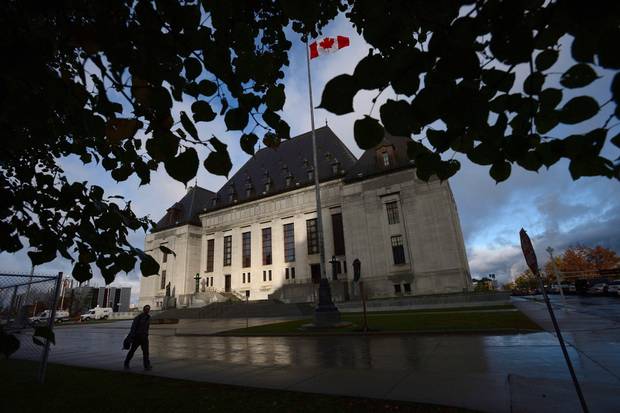On Tuesday, parliamentarians got a chance to question the Newfoundland judge that the Prime Minister picked to join the nation's top court. Scroll through justice writer Sean Fine's tweets below for a recap of what Malcolm Rowe was asked and what he said, and get caught up below on who Justice Rowe is and what lies ahead for the Supreme Court.
Who is Malcolm Rowe?
Justice Rowe, 63, is a Newfoundland and Labrador Court of Appeal judge, the first jurist from that province to be chosen for the Supreme Court. From a working-class family background, he went on to Ottawa to work in the foreign service, as an adviser to justice minister John Crosbie and as a practising lawyer before returning home for a career in the civil service and court system.
Read Sean Fine's in-depth profile (for subscribers) of Justice Rowe's career and what his friends and colleagues say about him. Here's what his friend Mark Dobbin, president of Killick Capital in St. John's, told The Globe:
Malcolm’s experience in government, in law, on the bench and just as a Newfoundlander – that’s a diversity that I think is good for the Canadian fabric.
Why and how did Trudeau pick him?
Justice Rowe is the first person chosen under a new process, announced by the federal government in August, in which Canadians were invited to apply for jobs on the Supreme Court. Here's what Justice Rowe had to say about the role of the Supreme Court in his application form, which the government published after his appointment was announced:
The Supreme Court maintains and develops the structure of law in Canada. Stability and predictability are important to maintain that structure. But, adaptation to changes in society, including changes in shared goals, is critical to the law’s development. It is important to operate from first principles, while also considering practical results. It is no less important to eschew ideological positions. Should the Court lead or mirror a shared sense of justice? The answer is, of course, both. Generally, it should lead when the time is ripe to do so, having regard to the needs and aspirations of Canadians.
A non-partisan advisory board, led by former prime minister Kim Campbell, came up with the short list of candidates that Mr. Trudeau used to make his choice. On Monday, at a hearing in Ottawa to defend the selection process, Ms. Campbell said 31 candidates applied, and just under half were women. The advisory board interviewed 10 of them.
Who else is on the Supreme Court?

Clockwise from top left: Andromache Karakatsanis, Beverley McLachlin, Russell Brown, Rosalie Abella, Suzanne Côté, Richard Wagner, Michael Moldaver and Clément Gascon.
PHOTOS: SUPREME COURT OF CANADA COLLECTION; DAVE CHAN FOR THE GLOBE AND MAIL
In addition to being one person short of its full nine judges, the court currently has a fairly new complement of jurists. When it began its new session earlier this month, only two out of eight judges had more than five years of Supreme Court experience. Here's a primer from Sean Fine on where the judges come from, who appointed them and what roles they've played in key legal decisions.
Is this process for picking judges the new normal?
At Monday's hearing, Justice Minister Jody Wilson-Raybould said the Trudeau government would stick with the new selection method: "A modern, dynamic, 21st-century court needed a modern, dynamic, 21st-century selection process," she said.
Justice Minister Jody Wilson-Raybould and former prime minister Kim Campbell wait to appear before the Standing Committee on Justice and Human Rights in Ottawa on Oct. 24, 2016.
ADRIAN WYLD/THE CANADIAN PRESS
Conservative and New Democrat MPs pointed out they would have liked to have participated in the actual creation of the short list. MPs from the three main parties had previously been involved in committee-style selections under the Stephen Harper administration, though after his controversial choice of Quebec judge Marc Nadon, Mr. Harper abandoned public hearings for his Supreme Court choices. ( Here's some background from Sean Fine about how the Trudeau government's method differs from that of the previous Conservative government, and how the new vetting process compares with the American one.)
In some respects, the choice of Justice Rowe doesn't stray far from established precedent. Traditionally, the court has one member from Atlantic Canada, like Mr. Rowe, as well as three from Ontario and two from Western Canada. By law, the court needs three members from Quebec, but the other regional requirements are only conventions. Ms. Wilson-Raybould says the government plans to choose appointees from across the country in the future, not just based on region – which could open wider opportunities for more racial and gender diversity on the bench, perhaps even the first indigenous judge. Justice Rowe, a white addition to an all-white Supreme Court, is precedent-setting only in being the first judge from Newfoundland and Labrador.
In future, when considering applications for federal judge positions, the government plans to ask people for the first time about their race, gender identity, indigenous status, sexual orientation and physical disability, Ms. Wilson-Raybould announced earlier this month.
With reports from Sean Fine and The Canadian Press




